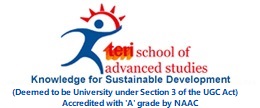
ANNOUNCEMENTS

Speakers: Prof. Murali Kallummal, Centre for WTO Studies, Indian Institute of Foreign Trade
c
For the purposes of achieving effective market acess, this note traces the urgent need for the negotiators to shift their focus away from ‘border’ measures like the tariffs to ‘behind-the-border’ measures like the domestic regulations. The efforts by Food and Agriculture Organisation (FAO) and the World Trade Organisation (WTO) who seeks to increase the developing and LDCs participation in the international standards setting bodies, to enhance trade in food and feed (FAO & WTO, 2017). In this context, let us explore the realities of market access, this note will trace this issue in some detail.
The WTO began with the task of disciplining two variables, identified as prominent barriers to international trade - the tariffs and the non-tariff measures (NTMs). The initial years of the WTO negotiation were spent in disciplining and liberalising tariff. These were achieved through country specific disciplines like the ceiling binding commitments and MFN applied tariffs. These efforts accelerated the process of lowering tariff barriers considerably at the same time the efforts to discipline NTMs were found wanting.
Today there is a growing body of theoretical, empirical and policy analysis, including the WTO’s 2005 World Trade Report, which recognises the technical regulations, standards and procedures for determining conformity can have both positive and detrimental effects on competition and international trade. Further this standard becomes the basic requirement for success of exports of a country (WTO 2016). Both the developed and developing countries indicate these requirements are often leading to increased costs and therefore are of greater concern to exporters and governments when compared with other forms of non-tariff measures.
The non-price based measures like regulations and technical standards in the form of sanitary and phytosanitary (SPS) and technical barriers to trade (TBT) are increasingly limiting market access and creating oligarchic industrial structures in the international trading regime. The domestic regulations and standards have recorded a rise and there is considerable literature to suggest this phenomenon.
Leading the pack is the European Union with series of legislations regulating the use of chemicals and other substances. The EC regulations which were notified to the WTO, like supplier declaration of conformity (S-DoC); registration, evaluation, authorisation and restriction of chemicals (REACH); classification, labelling and packaging (CLP) and some of other notifications of 2016 restricting 588 endocrine disruptors substances and agrochemicals like Beta-Cypermethrin and Tricyclazole (WTO, 2017). Increasingly they are being challenged by the other WTO member countries for possible violation of Article 5 of SPS agreement.
One such SPS barrier is the imposition of maximum residue limit (MRL) a mandatory SPS standard on food and feed products. These MRL standards are harmonised at the Codex alimentarius, an intergovernmental standardising body identified under the SPS Agreement.
Some of the MRL standards on active substances (agrochemicals) notified by the members can be stringent in comparison to Codex but are permitted by Article 5 of SPS agreement such measures need to be backed by either scientific justifications or risk assessment dosseir. However, the presence of non-Codex MRL standard on agrochemicals are those for which Codex does not have harmonised international standard. As there is no comparable MRL standard by the Codex so these can be questionable measures under Article 5. To the best of my understanding, this aspect of MRL standards has never been highlighted and not discussed in the literature.
As a researcher, I think there should be more clarity in the understanding of SPS-based MRL standards in its totality. This would be completely new phenomenon and would lead in supporting the cause of information asymmetry. This note attempts to highlight the importance of symmetry of information and the need for transparency in notifications. Further it suggests the need to put disciplines similar to that seen in case of tariff negotiations from 1995 onwards and similar efforts to be put in place for handling the barrier like the NTMs.
Plot No. 10, Institutional Area, Vasant Kunj, New Delhi - 110 070, India.
Tel. +91 11 71800222 (25 lines).
Website : www.terisas.ac.in
Email id : registrar@terisas.ac.in
© Copyright © 2025, TERI SAS, All rights reserved.
Visitors No.: 43473215 Since 2023


